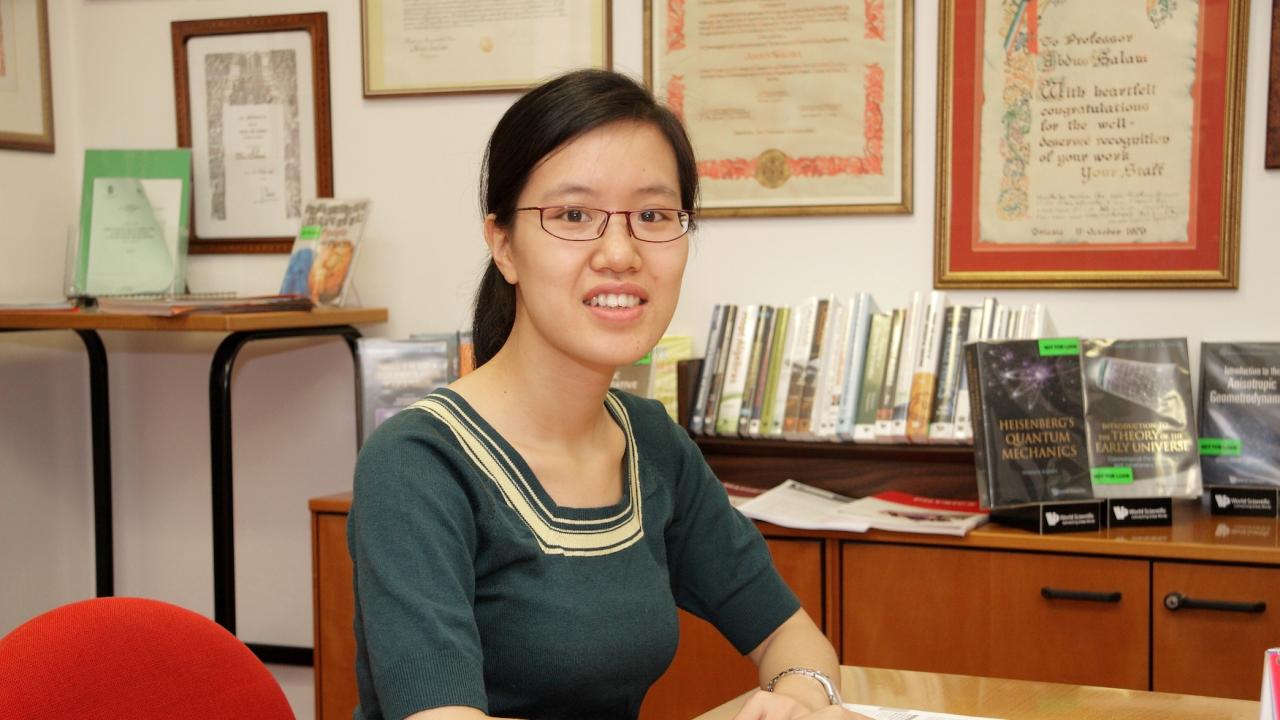
Nguyen Thi Thuong got her master's degree in theoretical physics in Vietnam and was interested in studying nanoscale science. When a friend advised her about a condensed matter programme at ICTP where she could do exactly that, she knew where she had to go. Now, she's free to pursue the kind of science that might not have been possible in Vietnam, studying quantum physics using ultracold atoms.
An ultracold atom is an atom so cold that it is almost absolute zero. Nguyen's work uses computers to simulate how atoms of elements like cesium and rubidium would behave in a device called an optical lattice. An optical lattice comprises two or more laser beams that strike each other, pinning the atom to a desired spot. The computational tool, called the Quantum Monte Carlo Technique, is one of the most powerful tools for studying ultracold atoms.
Cooling the atom down is necessary because, at high temperatures, atoms appear to behave in accordance to classical physics. Once the atom is ultracold, it's easier to observe its quantum mechanical effects. Nguyen's work specifically tries to glean insights into what happens at the quantum level when a normal fluid undergoes a phase transition and becomes a superfluid. A superfluid is like a normal fluid except it has no viscosity whatsoever and moves with complete freedom -- it can be thought of as the "thinnest" kind of liquid possible.
Nguyen said ICTP has been a great place for her to take part in this area of research because she can focus all her energy on her scientific work. "If I was in Vietnam I'd spend my time for both studying and for earning money," she said. "We cannot focus 100 percent on our studies in Vietnam, not like here."
She will be studying at SISSA after the diploma programme ends this year. Nguyen wants to get her Ph.D. and do some post-doctorate research before going back to Vietnam. When she returns to her home country, Nyugen would like to be a lecturer at the University of Vietnam while also researching. That way she can take the knowledge she has acquired abroad and bring it back to her country to teach to her future students.
















